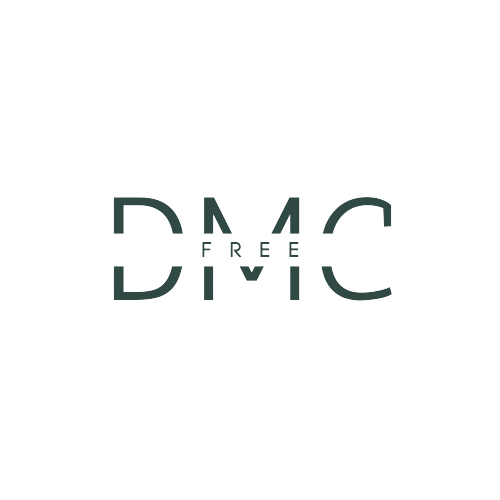
In an era dominated by technological advancement, product managers stand at a pivotal crossroads. Their role, intrinsically tied to a meticulous product management workflow, is crucial in translating raw ideas into market-ready products.
Table of Contents
Understanding the Product Management Workflow
The dynamism of product management requires a structured approach. The workflow isn’t simply about progressing from one stage to the next; it’s a cyclical journey of continuous refinement. For a more in-depth perspective on the role, you might refer to the article “What is Product Management?”.
Roles of A Product Manager
Product managers wear many hats in their daily roles, often bridging gaps between various departments. Here’s a brief overview of their essential roles:
- Strategist: Envisioning the product’s direction and ensuring alignment with broader company objectives.
- Customer Advocate: Ensuring the voice of the customer is always considered during product decisions.
- Team Collaborator: Collaborating with design, development, and marketing teams to bring the product to life.
- Market Analyst: Monitoring market trends, understanding competitor strategies, and identifying opportunities.
- Problem Solver: Addressing challenges that arise during the product’s life cycle and finding innovative solutions.
- Communicator: Maintaining transparency with stakeholders, ensuring everyone is aligned and informed.
Benefits of A Product Management Tool
In this fast-paced digital age, product managers often leverage dedicated tools to streamline their workflow. Such tools offer a plethora of advantages:
- Efficiency Boost: Automation of mundane tasks, allowing more focus on strategic tasks.
- Collaborative Hub: Centralised platform for all stakeholders to provide feedback and insights.
- Data-Driven Decisions: Comprehensive analytics to derive actionable insights and refine product strategies.
- Resource Allocation: Effective utilisation of resources based on priority and impact.
- Clear Roadmaps: Visual representation of product roadmaps ensuring alignment and clarity.
- Documentation: A singular repository for all product-related documentation, making retrieval and reference a breeze.
What is the tool that can be used for product management activities in agile development?
In the realm of agile development, a variety of tools facilitate product management activities. However, one tool that stands out for its robust features and adaptability is JIRA by Atlassian. Catering to both agile and Scrum methodologies, JIRA offers:
- Backlog prioritisation: Keeping teams focused on delivering value.
- Sprint planning tools: Easily breaking tasks into achievable sprints.
- Visual project tracking: A comprehensive view of project statuses and progress.
- Custom workflows: Tailoring the tool to fit unique project needs.
- Integration capabilities: Seamless integration with tools like Confluence, Bitbucket, and more.
Other notable mentions include Trello, Asana, and Monday.com, each offering its unique suite of features catering to different aspects of agile product management.

What are the 5 steps to achieving an exceptional product management workflow?
To master the product management process, certain steps stand out as particularly impactful. These steps underpin the essence of a successful workflow:
Table of Essential Steps for an Exceptional Workflow
| Step | Description |
|---|---|
| Vision Alignment | Ensure all team members share a unified vision for the product’s direction and purpose. |
| Collaborative Planning | Engage all relevant stakeholders in the planning process for diverse insights and expertise. |
| Iterative Development | Implement a development process that values feedback and makes iterative improvements. |
| User-Centric Focus | Always place the user at the heart of decisions, tailoring features to genuine user needs. |
| Continuous Evaluation | Implement regular review points to assess progress, gather feedback, and adjust accordingly. |
Key Stages of the Product Management Workflow
The essence of product management workflow is captured in distinct stages. Each phase, though unique, seamlessly blends into the next, ensuring a product’s evolution remains aligned with its foundational vision.
Table of Product Management Workflow Stages
| Stage | Description |
|---|---|
| Ideation | Gleaning ideas from diverse sources, such as market insights, team inputs, and user feedback. |
| Prioritization | Aligning ideas with business imperatives, gauging feasibility, and potential impact. |
| Validation | Ascertain the merit of ideas, employing prototypes or stakeholder feedback. |
| Design & Development | Melding design aesthetics with technical functionality. |
| Testing | Employ rigorous methodologies to ensure product robustness. |
| Launch | A strategic unveiling, encompassing pricing, market positioning, and outreach. |
| Evaluation & Iteration | Monitoring user engagement, collating feedback, and instigating product refinements. |
The Interconnected Nature of the Workflow
Product management is a flexible process. While it follows steps, often, feedback from one step can send teams back to a previous one. This back-and-forth movement helps make the product better. For more insights, Mind the Product offers a range of articles on this topic. Additionally, those interested in hands-on experience can look into the Product Management Intern role.

In Conclusion
At its core, the product management workflow is a confluence of strategy, innovation, and adaptability. As the market landscape perpetually evolves, so too must the approaches product managers employ, ensuring products not only satiate user needs but also catalyse business growth.
Frequently Asked Questions (FAQs) on Product Management
- What is workflow in product management?
The workflow in product management refers to the systematic process and steps that product managers and teams follow to take a product from ideation through to launch and ongoing improvement. It includes stages like research, planning, design, testing, launch, and review. - Do product managers own P&L?
Product managers are typically responsible for the overall health and success of their product, which often includes being accountable for the product’s profitability. However, while they influence P&L (Profit & Loss) through decisions on product features, pricing, and strategies, they might not directly “own” it in all organizations. Ownership of P&L varies depending on the company’s structure and the specific role of the product manager. - What are the 3 P’s of product management?
The 3 P’s of product management commonly refer to:- Product: Understanding the ins and outs of the product to meet user needs.
- People: Collaborating with teams and stakeholders to bring the product vision to life.
- Process: Implementing efficient methodologies to guide the product from idea to market.
- What are the 6 P’s of product management?
The 6 P’s, an expansion of the above, usually encompass:- Product: The core understanding of what is being offered.
- People: Both the team behind the product and its end-users.
- Process: The methodologies and workflows applied.
- Price: Strategizing the product’s cost for maximum profitability and market appeal.
- Place: The distribution channels and platforms where the product is available.
- Promotion: How the product is marketed and presented to the potential users.
- What are the pillars of product management?
The pillars of product management revolve around the foundational principles that ensure a product’s success. They typically include:- User Empathy: Understanding and prioritizing user needs and feedback.
- Strategic Vision: Setting a clear direction for the product’s future.
- Execution: Translating strategy into actionable tasks and ensuring they’re completed effectively.
- Leadership: Guiding teams, making decisions, and being the product’s primary advocate.


